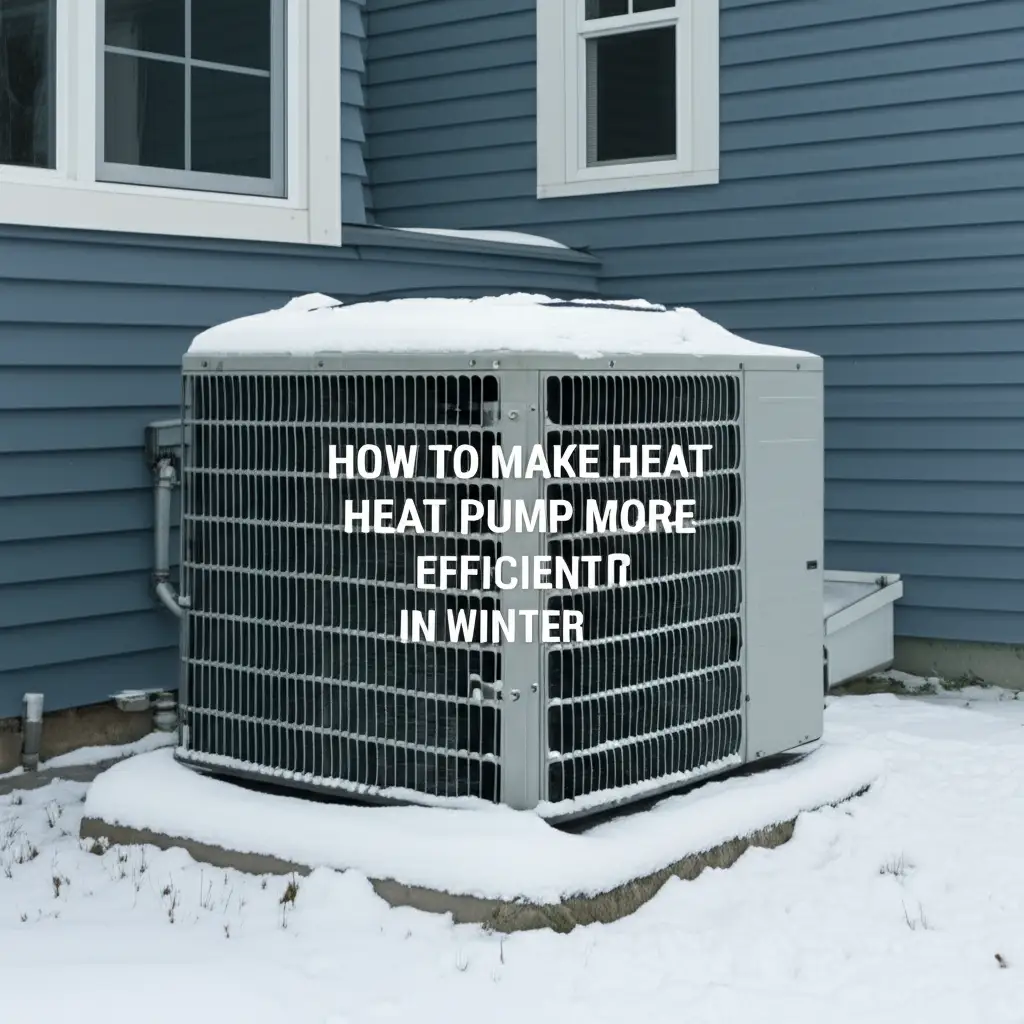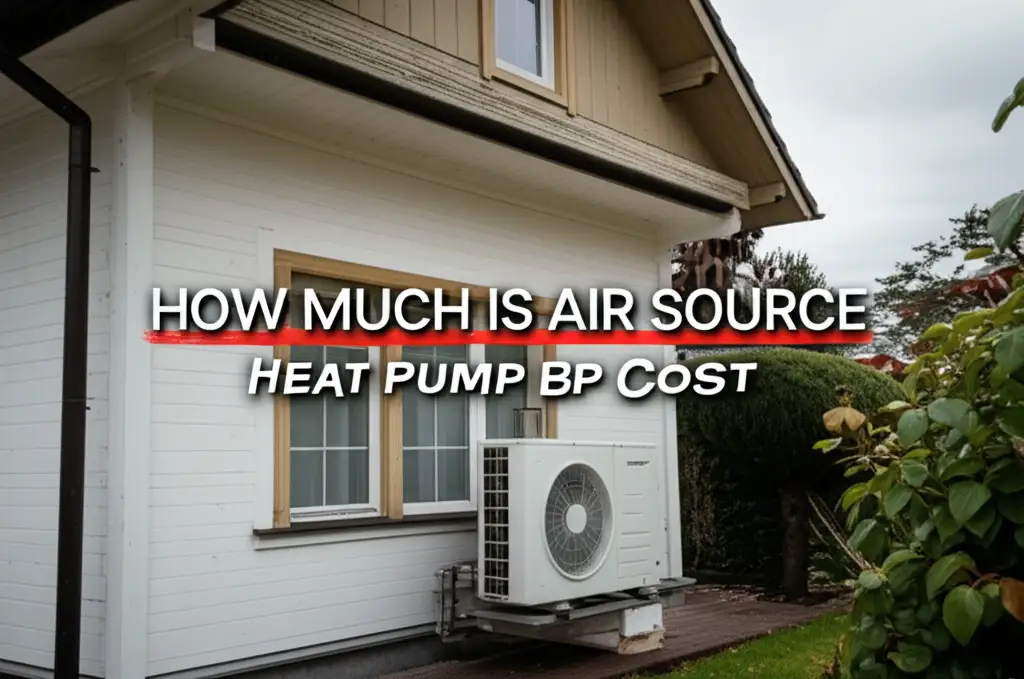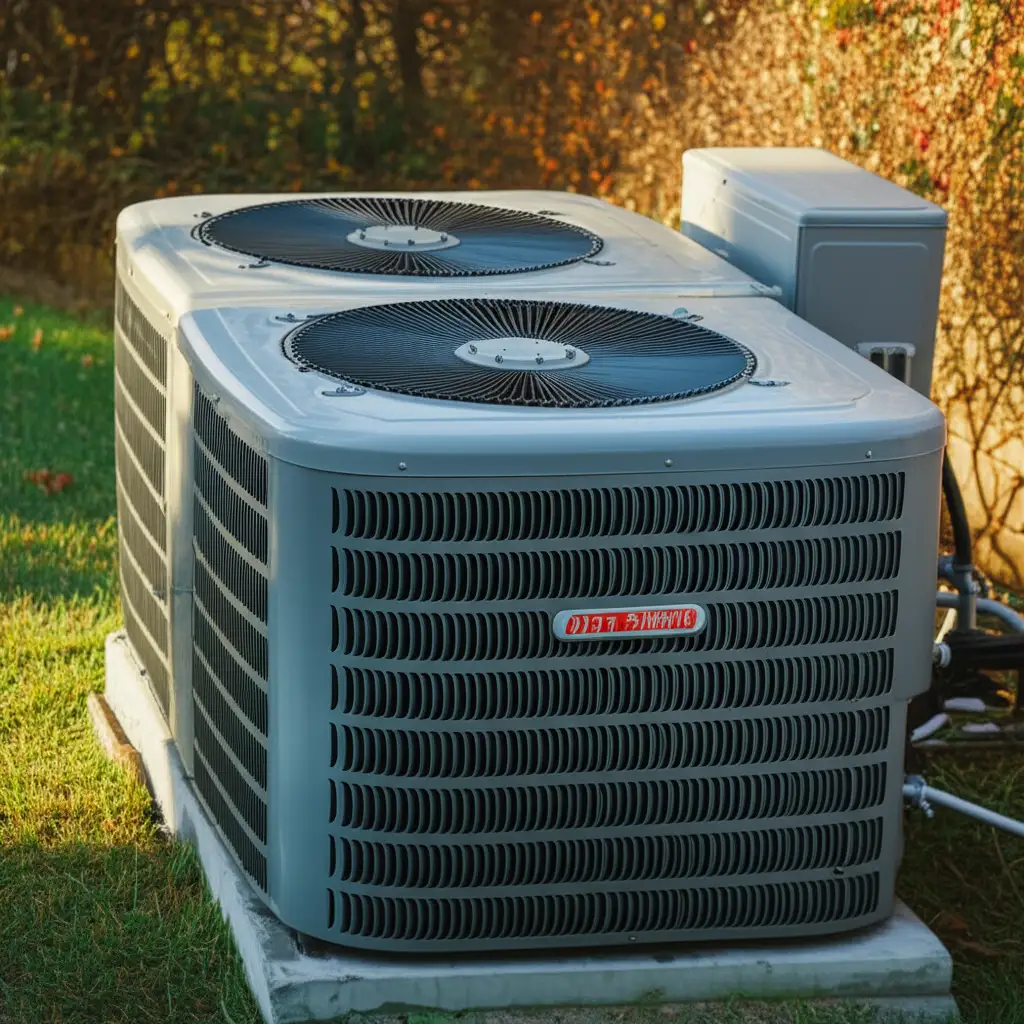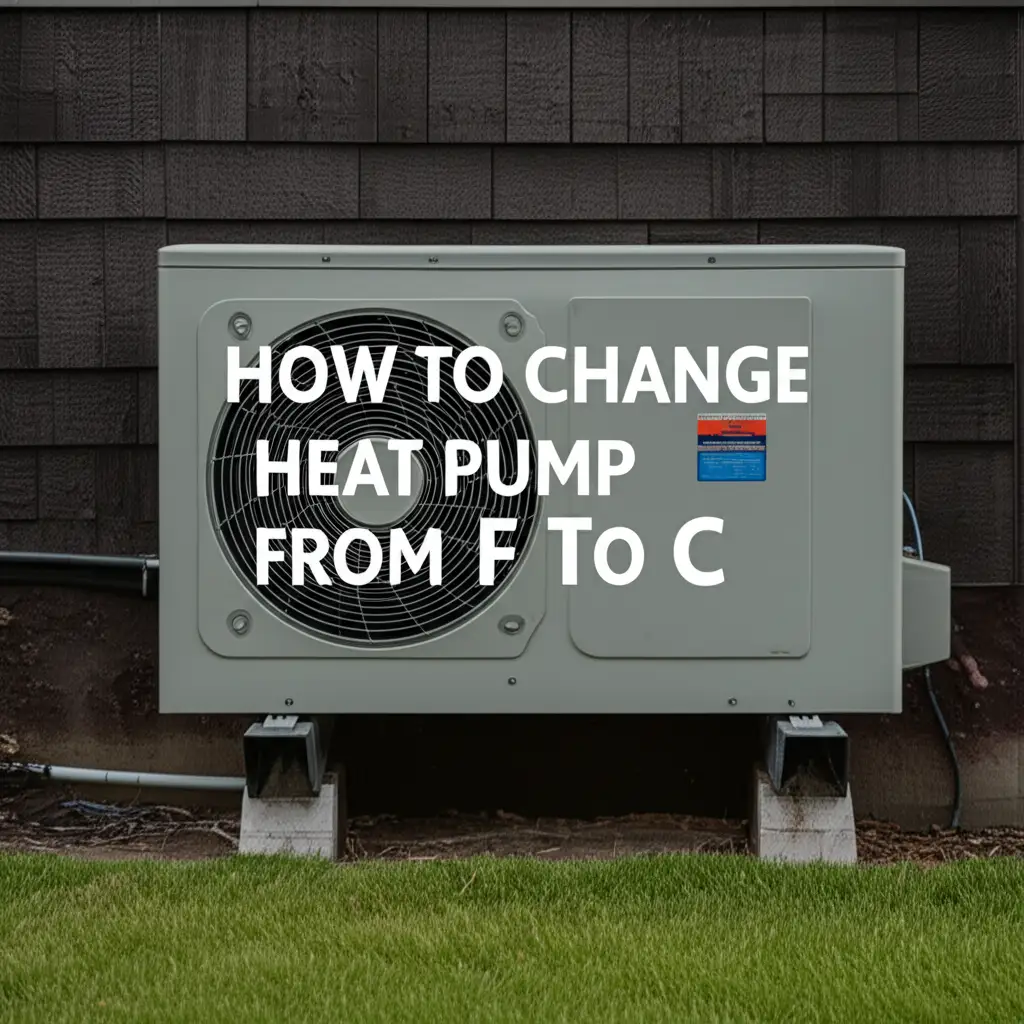· Katria Melrose · Home Heating & HVAC · 20 min read
Can Heat Pump And Aux Heat Run Simultaneously
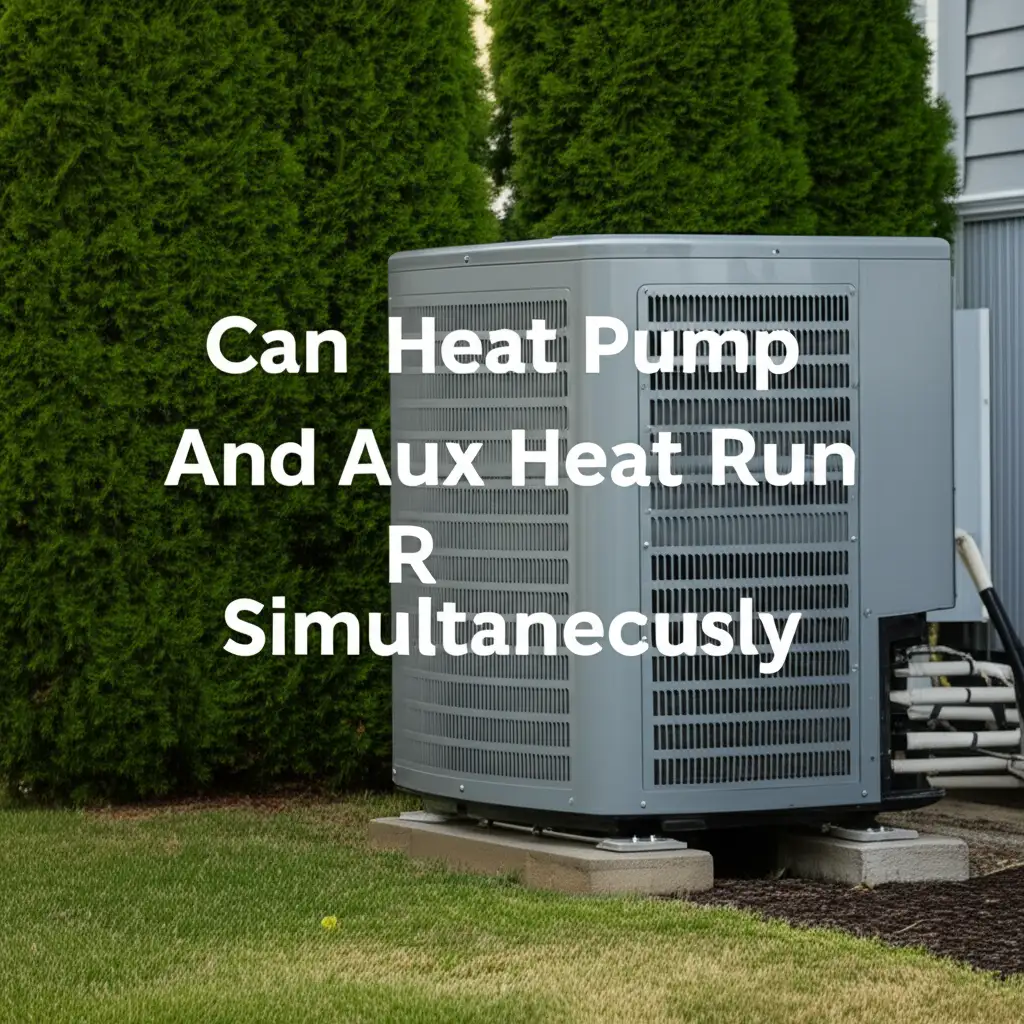
Heat Pump & Aux Heat: Understanding Simultaneous Operation
Have you ever noticed your heat pump running, yet you feel a different kind of warmth or hear additional components kick in? Perhaps you see an “Aux Heat” indicator on your thermostat. It makes you wonder: can a heat pump and auxiliary heat run simultaneously? This is a common question for homeowners seeking to understand their heating systems better. Exploring this relationship helps us grasp how modern HVAC systems ensure comfort even in the coldest conditions. It also sheds light on optimizing efficiency and managing energy costs.
In this comprehensive guide, we will explore the intricate dance between your heat pump and its auxiliary heating system. We will look at why and when they operate together, how your thermostat manages this, and what it means for your home’s comfort and energy bills. You will learn about typical scenarios for simultaneous operation, like defrost cycles and rapid temperature recovery. We will also cover how to optimize your system settings for peak performance and troubleshoot common concerns. Understanding this dynamic is key to a comfortable and efficient home.
Takeaway
- Yes, they can: Heat pumps and auxiliary heat often run together under specific conditions.
- Purposeful design: This simultaneous operation is a normal, designed function for comfort and efficiency in cold weather.
- Key Triggers: Defrost cycles, rapid temperature increases, and extreme cold activate auxiliary heat.
- Thermostat Control: Your thermostat manages when auxiliary heat engages.
- Efficiency Balance: While providing warmth, auxiliary heat uses more energy than the heat pump alone.
Can a heat pump and auxiliary heat run simultaneously?
Yes, a heat pump and auxiliary heat can run simultaneously. This co-operation is a standard operating mode for many heat pump systems. It ensures your home stays warm when the heat pump alone cannot meet the heating demand, such as during defrost cycles, very cold temperatures, or when quickly raising the indoor temperature.
Understanding Heat Pumps and Auxiliary Heat
To fully grasp how a heat pump and auxiliary heat can run simultaneously, we first need to understand each component. Think of your home’s heating system as a team. Each player has a specific role, but sometimes they work together to achieve the goal of keeping you warm. Let’s look at the individual players.
The Primary Role of Your Heat Pump
A heat pump is an incredibly efficient heating and cooling device. Unlike furnaces that generate heat by burning fuel, a heat pump moves heat. In winter, it extracts heat from the outside air, even when it feels cold, and transfers it indoors. This process makes it very energy-efficient. It does not create heat; it moves existing heat. This is why many people choose heat pumps for their homes.
Heat pumps are excellent at maintaining a comfortable temperature. They work best when outdoor temperatures are moderate. As the temperature drops, a heat pump’s ability to extract heat reduces. It still works, but it needs a little help sometimes. This is where the auxiliary heat steps in.
What is Auxiliary Heat?
Auxiliary heat, also known as supplemental heat or backup heat, is exactly what it sounds like: a secondary heat source. For most heat pump systems, auxiliary heat comes from electric resistance coils. These are like giant toaster coils located inside your indoor air handler. When active, they generate heat directly through electricity. Some heat pump systems, known as dual-fuel systems, use a gas furnace as their auxiliary heat source. This offers more powerful heating.
Auxiliary heat serves as a safety net. It ensures your home remains warm even when your heat pump struggles. It provides immediate, powerful warmth. However, electric resistance heating is less efficient than a heat pump. It uses more electricity to produce the same amount of heat. Understanding this difference is crucial for managing your energy bills.
When Simultaneous Operation Occurs Naturally
Simultaneous operation is not a fault; it’s a designed feature. Your heat pump system automatically engages auxiliary heat when needed. This intelligent design ensures consistent comfort while still prioritizing the heat pump’s efficiency. There are specific scenarios where you will commonly see your heat pump and auxiliary heat working together.
Defrost Cycle Activation
Heat pumps operate by absorbing heat from the outside air. In cold, humid conditions, moisture in the outdoor air can condense and freeze on the outdoor coil. This ice buildup reduces the heat pump’s efficiency. To prevent this, the system initiates a defrost cycle. During defrost, the heat pump temporarily switches to cooling mode to warm the outdoor coil and melt the ice. At the same time, the auxiliary heat kicks in indoors. This prevents cold air from blowing into your home while the outdoor unit defrosts.
You might notice the fan running, but no heat comes out during a defrost cycle. This is a common concern. However, with auxiliary heat, your home stays warm. This seamless transition is vital for continuous comfort. Understanding this cycle helps explain why your heat pump might occasionally run in a seemingly unusual way. For more details on fan operation, you can read about Does Heat Pump Fan Run When Heat Is On.
Rapid Temperature Recovery
Imagine you set back your thermostat temperature at night to save energy. When you wake up, you increase the setting to a warmer temperature. Your heat pump immediately starts working to reach the new set point. If the temperature difference is significant (e.g., trying to raise the temperature by 3-5 degrees Fahrenheit or more quickly), the system might engage auxiliary heat. The heat pump alone might take a long time to achieve such a large temperature change.
Auxiliary heat provides a quicker boost to bring your home up to the desired temperature. It works in conjunction with the heat pump to accelerate the process. Once the indoor temperature approaches the set point, the auxiliary heat typically disengages, allowing the more efficient heat pump to maintain the temperature. This ensures rapid comfort without relying solely on the heat pump for quick gains.
Reaching the Balance Point
Every heat pump has a “balance point.” This is the outdoor temperature below which the heat pump alone cannot effectively heat your home. Below this balance point, the heat pump continues to operate, but it needs assistance. The auxiliary heat activates to supplement the heat pump’s output. For example, if your balance point is 35°F, and the outdoor temperature drops to 25°F, your heat pump will still run, but the auxiliary heat will also turn on to ensure adequate warmth.
This is a critical function for heat pumps in colder climates. It prevents the system from running constantly without reaching the desired temperature. Running the heat pump alone below its balance point would lead to discomfort and potentially higher energy use anyway, as it would struggle. Therefore, the auxiliary heat steps in to fill the gap. This combined effort maintains indoor comfort efficiently even in cold conditions. You might wonder Why Does Heat Pump Run All The Time when it’s very cold; this is often due to it trying to reach its balance point.
Thermostat Control and Settings
Your thermostat acts as the brain of your heating system. It decides when your heat pump runs and when auxiliary heat needs to kick in. Modern thermostats are quite sophisticated. They use algorithms to determine the most efficient way to maintain your home’s temperature. Understanding your thermostat’s settings is key to managing your heating costs and comfort.
Smart Thermostat Features
Smart thermostats offer advanced control over heat pump and auxiliary heat operation. Many smart thermostats learn your preferences and the unique characteristics of your home. They can optimize when auxiliary heat engages. Some allow you to set a “lockout temperature” for auxiliary heat. This means auxiliary heat will not activate above a certain outdoor temperature, even if there’s a significant temperature setback. This feature helps prevent the use of less efficient auxiliary heat when it’s not strictly necessary.
These thermostats can also display energy usage, showing you when your auxiliary heat is active. This transparency helps you understand your energy consumption. By using smart features, you gain more control and insight into your heating system. This allows for more informed decisions about your comfort and budget.
Manual Overrides and Emergency Heat
While automatic operation is standard, most thermostats also offer manual control. You might see an “Emergency Heat” setting. When you select emergency heat, you are typically bypassing the heat pump entirely. Only the auxiliary heat (electric resistance coils or furnace) will operate. This setting is for emergencies, such as when your heat pump is malfunctioning. It provides heat immediately but at a much higher energy cost.
It is important not to confuse “Emergency Heat” with “Auxiliary Heat” (sometimes labeled “Aux”). Auxiliary heat runs with the heat pump as needed. Emergency heat runs instead of the heat pump. Using emergency heat routinely is very expensive. Only use it if your heat pump is broken. If you need to use this function, it’s good to know How to Put Heat Pump on Emergency Heat.
Some thermostats also allow you to manually override the system to force auxiliary heat on. However, this is rarely recommended for efficiency. Trust your thermostat to manage the system. It is designed to balance comfort and energy use.
Benefits and Drawbacks of Simultaneous Operation
The simultaneous operation of your heat pump and auxiliary heat is a trade-off. It balances immediate comfort with energy efficiency. While designed to work together, there are both advantages and disadvantages to this combined operation. Understanding these points helps you appreciate your system’s design and manage its use.
Energy Efficiency Considerations
The primary benefit of a heat pump is its high efficiency. It moves heat, consuming less electricity than direct electric heating. Auxiliary heat, especially electric resistance, is 100% efficient at converting electricity to heat, but electricity itself is an expensive energy source for direct heating. So, while 100% efficient in conversion, it is generally much more expensive to run than the heat pump.
When auxiliary heat runs alongside the heat pump, the overall system efficiency decreases compared to the heat pump running alone. The heat pump is still contributing its efficient warmth, but the added energy draw from the auxiliary heat coils raises the total energy consumption. Your system is designed to use auxiliary heat only when necessary. This balances efficiency with the need for sufficient heat. For context, consider Is Heat Pump More Efficient Than Electric Heat. The answer directly impacts this discussion.
Impact on Utility Bills
The most significant drawback of simultaneous operation is the impact on your utility bills. Since auxiliary heat consumes more electricity, its frequent activation can lead to noticeably higher energy costs. Many homeowners are surprised by their winter bills, only to discover their auxiliary heat has been running more often than expected. This can happen if the outdoor temperatures are consistently very low, or if thermostat setbacks are too aggressive.
Monitoring your energy consumption can help. Some smart thermostats provide detailed usage reports. If you notice your auxiliary heat light is on frequently, especially when outdoor temperatures are not extremely cold, it might indicate an issue or a need to adjust your thermostat settings. Understanding how this impacts your budget helps you make informed choices about your heating strategy. You might also ask yourself Why is My Air Source Heat Pump Expensive to Run, and auxiliary heat usage is often a key factor.
Comfort and System Longevity
Despite the increased cost, simultaneous operation offers a major benefit: consistent comfort. Without auxiliary heat, a heat pump might struggle to heat your home during very cold spells or after large temperature setbacks. This would lead to a chilly house and a heat pump running endlessly trying to catch up. The auxiliary heat ensures your home reaches and maintains the desired temperature, providing immediate and effective warmth.
This also relates to system longevity. While running more, the combined operation helps the heat pump avoid over-cycling or continuous strain in inadequate conditions. It prevents the heat pump from running inefficiently for prolonged periods when it cannot meet the load. This can help extend the life of your heat pump by not forcing it to operate beyond its comfortable limits. A well-designed system balances efficient operation with maintaining comfortable living conditions.
Troubleshooting and Common Misconceptions
Understanding how your heat pump and auxiliary heat operate together helps dispel common myths and identify potential issues. Many homeowners become concerned when they see the “Aux Heat” indicator on their thermostat. Often, this is normal. However, there are times when it signals a problem. It is important to distinguish between normal operation and a malfunction.
”Heat Pump Running All The Time” Syndrome
One frequent concern is when the heat pump seems to run constantly, and the auxiliary heat light stays on for long periods. If this happens during extremely cold weather, it is often normal. Your heat pump is doing its best, and the auxiliary heat is helping. This is especially true if you have a larger home or poor insulation. The system needs to work harder to maintain the desired temperature.
However, if your auxiliary heat is constantly on even in moderately cold weather, or if your heat pump seems to run non-stop without reaching the set temperature, there might be an underlying issue. This could be anything from a dirty air filter to low refrigerant levels, or even an improperly sized system. A common question homeowners have is Does an Air Source Heat Pump Run All The Time. The answer is often yes, but there’s a difference between efficient continuous running and struggling operation.
Identifying Malfunctions
While some simultaneous operation is normal, excessive or unusual auxiliary heat use can point to a problem. Here are a few signs that might indicate a malfunction:
- Auxiliary heat always on: If the auxiliary heat light is constantly illuminated, even when outdoor temperatures are mild, it could mean your heat pump is not working efficiently or at all.
- Cold air from vents: If your heat pump is running but blowing cold air, and auxiliary heat isn’t engaging when it should, there’s likely a significant issue.
- High energy bills without extreme cold: A sudden spike in your utility bill, despite typical winter temperatures, suggests the auxiliary heat is being overused.
- No heat at all: If your heat pump is not turning on, or if neither the heat pump nor auxiliary heat is providing warmth, it’s a clear sign of a malfunction. In such cases, checking Why Is My Heat Pump Not Turning On might offer initial insights.
If you suspect a malfunction, it’s best to contact a qualified HVAC technician. They can diagnose the problem and perform necessary repairs. Ignoring these signs can lead to discomfort, higher energy bills, and potential damage to your system.
Optimizing Your System for Efficiency
While simultaneous operation is normal and necessary at times, you want to minimize the reliance on auxiliary heat due to its higher running costs. There are several strategies you can employ to optimize your heat pump system for maximum efficiency. These tips focus on reducing the frequency and duration of auxiliary heat engagement.
Regular HVAC Maintenance
The most crucial step for an efficient heating system is regular maintenance. A well-maintained heat pump operates at peak performance, reducing its need for auxiliary heat. This includes:
- Changing air filters: Dirty filters restrict airflow, making your heat pump work harder and less efficiently. Replace them every 1-3 months.
- Cleaning outdoor coil: Dirt and debris on the outdoor unit’s coil hinder its ability to absorb heat. Keep it clear of leaves, snow, and ice.
- Annual professional tune-ups: A certified technician can check refrigerant levels, electrical connections, and overall system operation. They can catch minor issues before they become major problems.
Proper maintenance ensures your heat pump is doing its job effectively, delaying or preventing the need for auxiliary heat. This proactive approach saves you money in the long run.
Proper Thermostat Programming
Your thermostat settings play a significant role in auxiliary heat usage. Avoid large temperature setbacks, especially during colder weather. If you drop the temperature too much overnight (e.g., from 70°F to 60°F), your heat pump will require significant assistance from auxiliary heat to recover that temperature difference in the morning.
Instead, opt for smaller setbacks (e.g., 2-4 degrees). Or, use a smart thermostat with an “optimizing recovery” feature. This feature gradually raises the temperature before your scheduled wake-up time, minimizing auxiliary heat use. For instance, if you want your home at 70°F by 7 AM, the thermostat might start heating at 6 AM using only the heat pump. Learning How to Run an Air Source Heat Pump Efficiently often involves smart thermostat programming.
Home Weatherization
Improving your home’s insulation and sealing air leaks can significantly reduce the workload on your heating system. When your home retains heat better, your heat pump doesn’t have to work as hard, and the auxiliary heat won’t need to engage as often. Consider these improvements:
- Insulation: Ensure your attic, walls, and crawl spaces have adequate insulation.
- Window and door sealing: Seal cracks around windows and doors with caulk or weatherstripping.
- Draft stoppers: Use them under exterior doors.
- Energy-efficient windows: Upgrade older windows if possible.
These measures create a tighter building envelope. This means less heat escapes, and less cold air infiltrates. Your heat pump can maintain comfort more easily, and you will see your energy bills decrease. Investing in weatherization complements your heat pump’s efficiency.
Comparing Heat Pump Systems with Auxiliary Options
Understanding the different types of auxiliary heat and their implications is crucial. While electric resistance coils are common, some heat pump systems integrate with other heating methods. Each setup has its unique characteristics regarding efficiency, cost, and performance.
Electric Resistance Auxiliary Heat
This is the most common form of auxiliary heat in standalone heat pump systems. It uses electric heating elements, similar to those found in an electric oven or a hair dryer. They produce heat directly when electricity passes through them.
- Pros:
- Simple: Easy to install and integrate with a heat pump.
- Reliable: Very few moving parts, so they are generally dependable.
- Instant heat: Provides immediate warmth when activated.
- Cons:
- Expensive to run: Electricity used for direct heating is costly compared to a heat pump’s heat transfer.
- High energy consumption: Can significantly increase utility bills if used frequently.
Most homes with heat pumps rely on this type of auxiliary heat. It’s an effective backup but designed for intermittent use rather than continuous primary heating. This system contrasts directly with the efficiency of the heat pump itself, as detailed in Is Heat Pump More Efficient Than Electric Heat.
Dual-Fuel Heat Pump Systems (Hybrid Systems)
A dual-fuel system combines an electric heat pump with a fossil fuel furnace, typically natural gas or propane. In this setup, the furnace acts as the auxiliary heat source. The system is programmed to switch from the heat pump to the furnace when outdoor temperatures drop below a certain point, or when the heat pump cannot meet the heating demand.
- Pros:
- Excellent efficiency: Uses the heat pump in moderate temperatures and a more powerful, potentially cheaper-to-run furnace in very cold weather.
- Powerful heating: Furnaces provide strong, consistent heat, even in sub-zero temperatures.
- Lower operating costs in very cold climates: Natural gas can be cheaper than electricity for heating, especially when it’s extremely cold.
- Cons:
- Higher upfront cost: Two main heating units (heat pump and furnace) mean a greater initial investment.
- Requires gas line: Not an option for homes without access to natural gas.
Dual-fuel systems offer a compelling balance of efficiency and comfort for homeowners in colder climates. They combine the best of both worlds: the efficiency of a heat pump with the robust heating power of a furnace.
Considerations for Your Climate
The choice of auxiliary heat depends heavily on your local climate.
- Mild Climates: In areas with generally mild winters, an electric resistance auxiliary heat system is usually sufficient. The heat pump will handle most of the heating load, and auxiliary heat will rarely be needed.
- Cold Climates: In regions with harsh, prolonged winters, a dual-fuel system is often the more cost-effective and comfortable choice. The heat pump can handle the shoulder seasons, and the furnace can take over when temperatures plummet, saving on electricity costs.
Understanding your climate and specific heating needs helps determine the best type of auxiliary heat for your home. It ensures you have adequate warmth without breaking the bank.
FAQ Section
Q1: How do I know if my auxiliary heat is on?
You can usually tell if your auxiliary heat is on by checking your thermostat. Many modern thermostats have an “Aux Heat,” “Aux,” or “Emergency Heat” indicator light that illuminates when it’s active. You might also notice a warmer, drier heat coming from your vents compared to the heat pump’s usual warmth. Your outdoor unit might also be in a defrost cycle, but still blowing warm air indoors.
Q2: Is it normal for auxiliary heat to come on often?
It is normal for auxiliary heat to come on often during very cold weather, especially when temperatures drop below your heat pump’s balance point. It also activates during defrost cycles or when you significantly raise your thermostat setting. However, if it runs constantly when it’s not extremely cold, or if your energy bills are unusually high, it might indicate an issue with your heat pump or settings.
Q3: Can I prevent my auxiliary heat from turning on?
You can influence how often auxiliary heat turns on by adjusting your thermostat settings and improving home efficiency. Avoid large temperature setbacks, especially overnight, as the system will use auxiliary heat to recover quickly. Smart thermostats may allow you to set an auxiliary heat lockout temperature. Regular maintenance and good home insulation also reduce the need for auxiliary heat.
Q4: Does using auxiliary heat damage my heat pump?
No, using auxiliary heat as designed does not damage your heat pump. Auxiliary heat is an integrated part of the system. It helps the heat pump by providing supplemental warmth when the heat pump cannot meet the demand alone. This prevents the heat pump from running inefficiently or being overworked in extreme conditions, potentially extending its lifespan.
Q5: What is the difference between auxiliary heat and emergency heat?
Auxiliary heat works with your heat pump, providing supplemental warmth when needed (e.g., during defrost, cold weather). Emergency heat, on the other hand, bypasses your heat pump entirely and relies solely on the auxiliary heating source. Emergency heat is for situations where your heat pump is broken or unable to function. It is far less efficient and more costly to operate.
Q6: How can I reduce my heating costs if my auxiliary heat runs a lot?
To reduce heating costs when auxiliary heat runs frequently, focus on improving overall home insulation and air sealing. Seal drafts around windows and doors, and ensure adequate attic insulation. Optimize your thermostat settings by avoiding large temperature swings. Consider getting a professional HVAC tune-up to ensure your heat pump operates at peak efficiency, minimizing the need for auxiliary heat.
Conclusion
Understanding the dynamic relationship between your heat pump and auxiliary heat is crucial for any homeowner. The answer to “Can heat pump and aux heat run simultaneously?” is a resounding yes, and it is a fundamental part of how these modern heating systems deliver consistent comfort. This simultaneous operation is not a flaw; it is a designed function that ensures your home stays warm even in the coldest conditions, during defrost cycles, or when rapidly increasing the temperature. Your thermostat expertly manages this interplay, balancing efficiency with the need for immediate warmth.
While auxiliary heat provides a necessary boost, it is important to remember its higher energy consumption compared to the heat pump itself. By optimizing your thermostat settings, investing in regular maintenance, and improving your home’s insulation, you can significantly reduce your reliance on auxiliary heat and manage your energy bills effectively.
If you ever suspect excessive auxiliary heat usage or a system malfunction, always consult with a qualified HVAC professional. By staying informed and proactive, you ensure your heat pump system operates efficiently, keeping your home comfortable for years to come. Take control of your home’s heating, understand your system, and enjoy a warmer, more efficient living space.


